Reviving Hiro's Joy: The Healing Power of Shockwave Therapy for a Spirited Samoyed
Hiro, the spirited and vivacious 3-year-old Samoyed, faced a setback when he ruptured his cranial cruciate ligament, leading to the need for a knee surgery known as Tibial Plateau Leveling Osteotomy (TPLO). After the surgery, Hiro experienced pain and struggled to walk and play like his usual lively self.
To help Hiro regain his mobility and zest for life, a combination of therapies was employed. Initially, therapeutic laser treatment was administered to alleviate muscle discomfort. However, the turning point in Hiro's recovery came with the introduction of shockwave therapy.
Shockwave therapy, a non-invasive modality, utilises sound energy to induce physical changes by delivering compressive and tensile forces at tissue interfaces. This process triggers cells to release cytokines and growth factors, fostering a cascade of healing responses. The therapy exerts its influence through four key effects primarily driven by cytokines and growth factors crucial for the healing process:
- Increased Blood Flow (Neovascularisation):
Shockwave therapy promotes neovascularisation, enhancing blood circulation to the targeted area. This heightened blood flow contributes to the overall improvement of tissue health. - Pain and Inflammation Control (NO Cycle):
By influencing the nitric oxide (NO) cycle, shockwave therapy effectively manages pain and inflammation. This mechanism plays a pivotal role in alleviating discomfort associated with various conditions, including arthritis, soft tissue injuries, and fractures. - Stimulation of Bone Morphogenetic Protein:
The therapy stimulates the release of bone morphogenetic protein, a key factor in bone regeneration. This effect supports the healing process, particularly in cases involving fractures or bone-related injuries. - Enhanced Tendon and Ligament Healing:
Shockwave therapy contributes to the improved quality of tendon and ligament healing by promoting a more linear fiber pattern. This structural enhancement signifies a positive impact on the integrity and resilience of these connective tissues.
Additionally, the therapy offers a temporary analgesic effect, providing valuable relief to our canine companions. As a versatile treatment option, shockwave therapy addresses a spectrum of conditions, showcasing its efficacy in mitigating pain, inflammation, and swelling. By harnessing the body's natural healing mechanisms, this approach stands as a valuable ally in supporting the well-being of our furry friends.
After a series of shockwave therapy sessions, Hiro's owner was astounded by the remarkable results. Hiro's mobility improved notably, allowing him to put more weight on his previously affected leg, and his lameness significantly diminished. When combined with laser therapy and a carefully crafted exercise regimen, shockwave therapy played a pivotal role in Hiro's rehabilitation. It not only accelerated his healing process but also ensured a successful and joyous recovery for this exuberant Samoyed.
This site is protected by reCAPTCHA and the Google Privacy Policy and Terms of Service apply.



